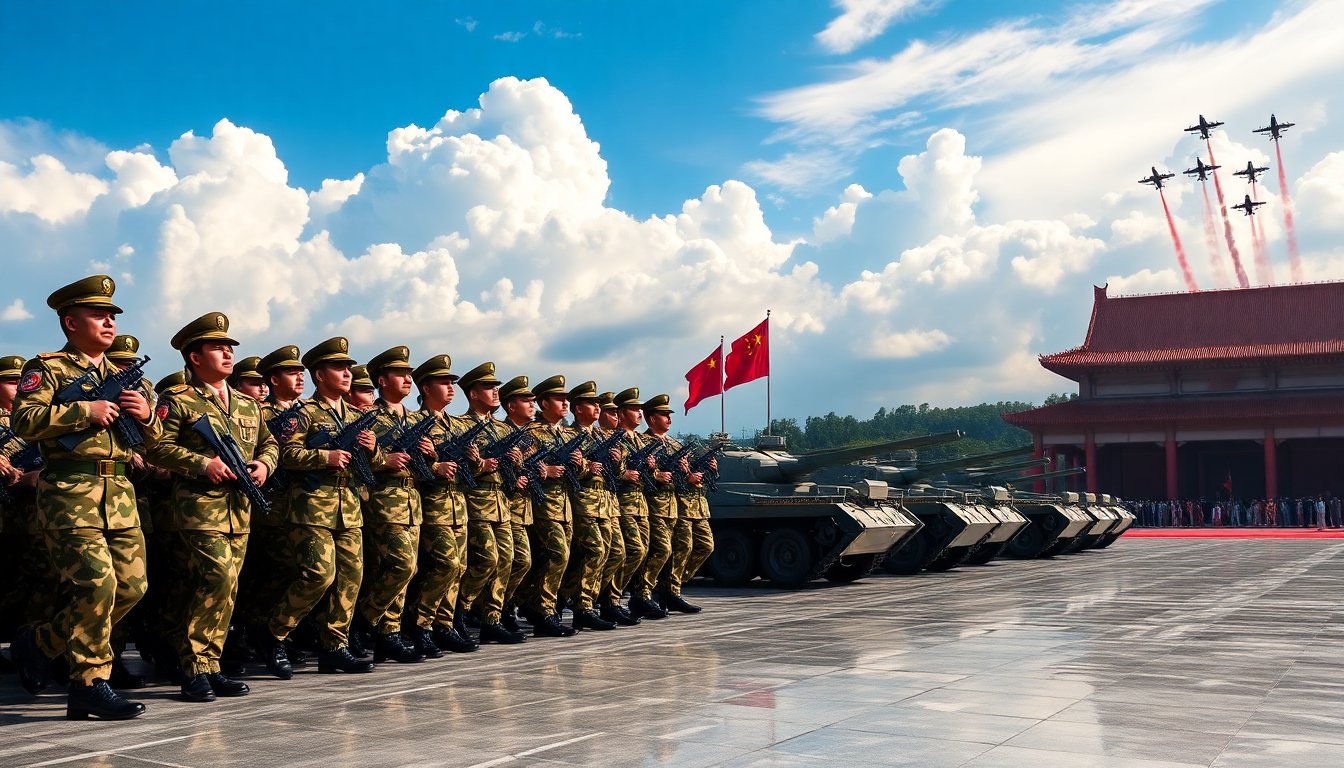Table of Contents
China is signaling a significant shift in its military strategy, highlighted by a recent parade in Beijing. This event commemorated the 80th anniversary of Japan’s defeat in World War II and showcased the People’s Liberation Army’s (PLA) advanced weaponry. It also introduced three newly established military branches, underscoring China’s commitment to modernizing its armed forces by integrating cutting-edge technology for enhanced operational capabilities.
Military Modernization and New Command Structures
The parade featured impressive formations from traditional branches of the PLA, including the Army, Navy, Air Force, Joint Logistics Support Force, and Rocket Force. However, the focus was on the newly created Information Support Force, Military Aerospace Force, and Cyberspace Force. These branches are crucial in reshaping China’s approach to warfare, incorporating advanced technologies to improve operational efficiency across multiple domains.
Analysts observe that this introduction marks a decisive step in China’s strategic evolution. By enhancing its command structure and integrating advanced technology, China positions the PLA to effectively address contemporary security challenges. Timothy Heath, a senior international defense researcher at Rand Corporation, noted that these developments reflect the PLA’s readiness to operate across all domains, indicating a comprehensive approach to modern military operations.
Technological Integration in Military Operations
Central to this modernization effort is a strong focus on technological integration. The new branches not only showcase formations but are also equipped with the latest advancements in cyberspace warfare, electronic countermeasures, and information support systems. This infusion of technology signals a broader trend within the PLA to embrace innovation and enhance its combat capabilities.
With the growing importance of cyber and information warfare, the establishment of the Information Support Force and Cyberspace Force highlights China’s recognition of the need for multi-domain operational capabilities. These forces are designed to ensure that China can effectively manage information operations and electronic warfare, which have become critical components of modern military engagements.
Implications for Regional and Global Security
The implications of China’s military innovations extend beyond its borders. As the PLA evolves, neighboring countries and global powers must reassess their strategic postures. The integration of advanced technology into China’s military framework poses potential challenges for regional stability and security. Observers are closely monitoring how these developments might influence military dynamics in Asia and beyond.
In conclusion, the unveiling of new military branches and the emphasis on technological integration signify a pivotal moment in China’s military evolution. As the PLA adapts to the complexities of modern warfare, the global community must carefully navigate the implications of these changes. Understanding China’s strategic intentions will be crucial for anticipating future developments in international defense relations.


